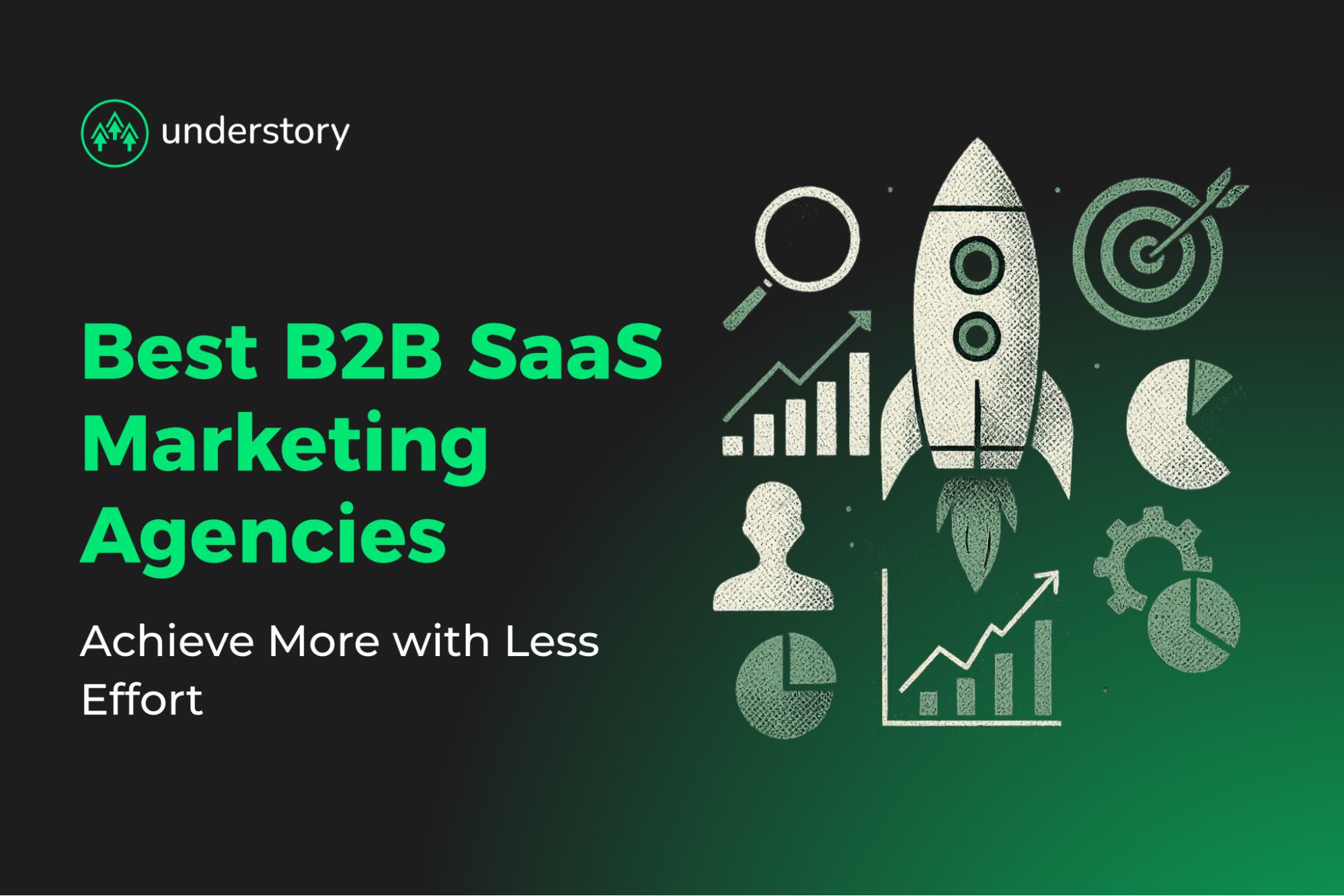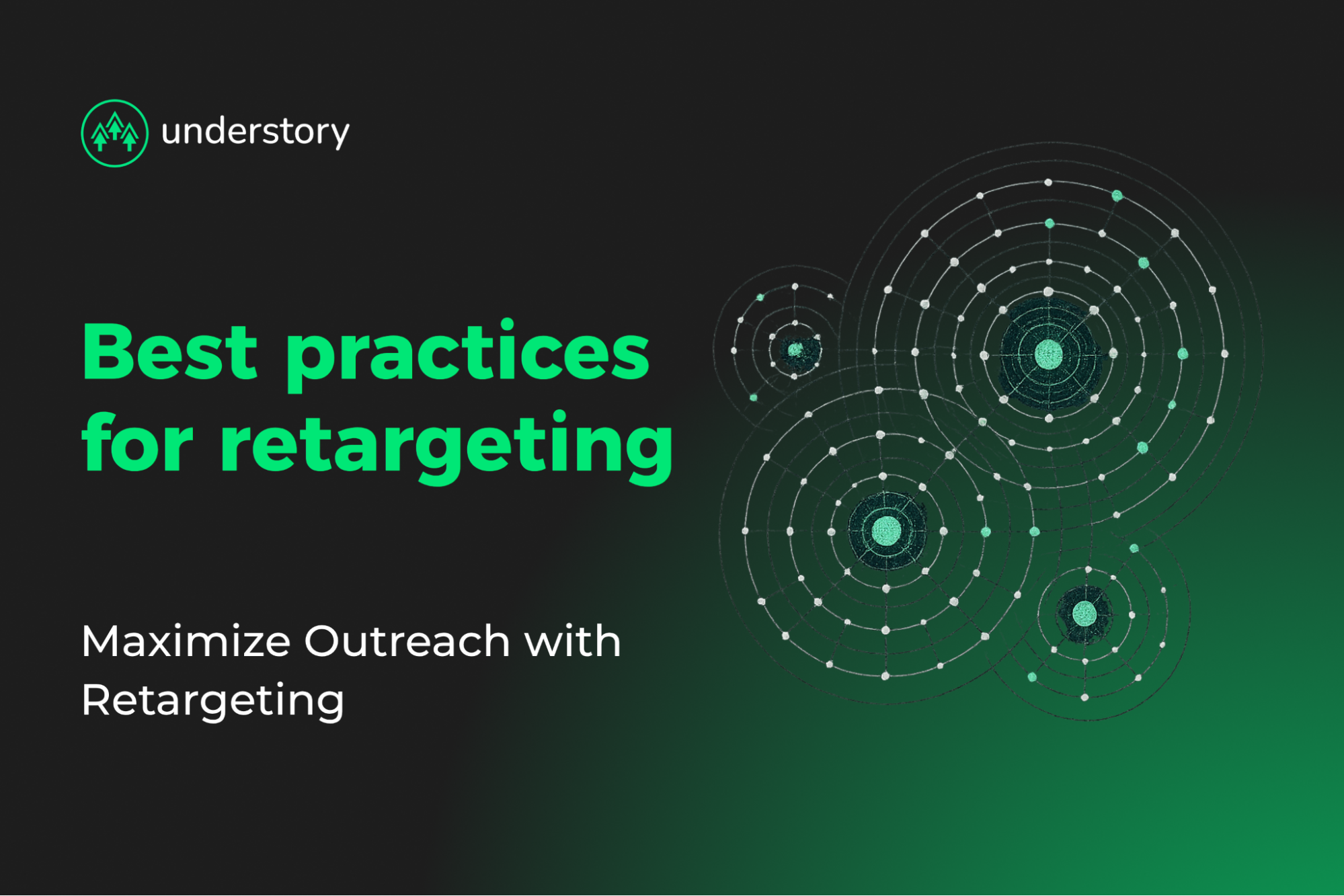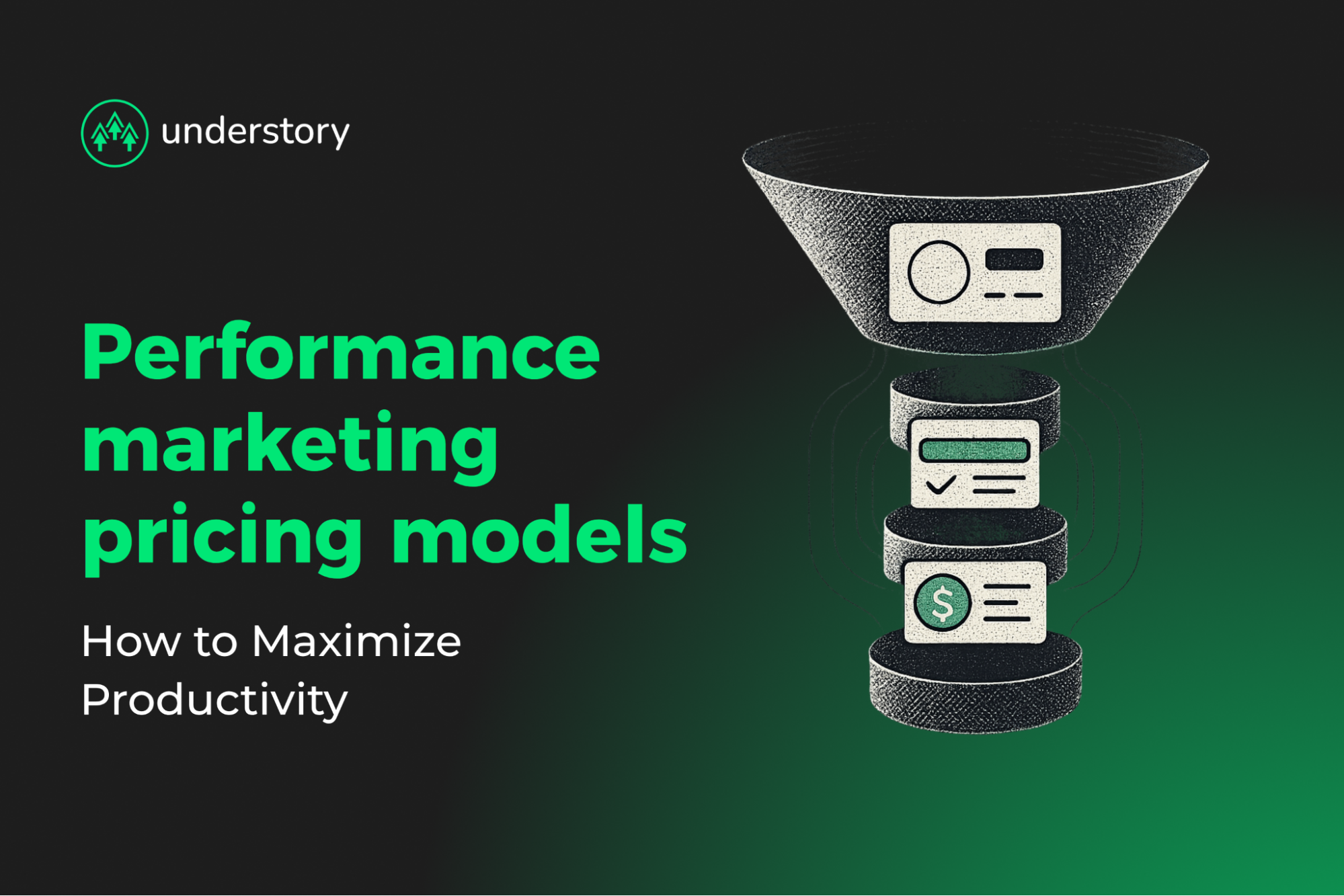

How to make a business growth plan in 7 steps
Build a strategic business plan for predictable growth.
If you're leading growth at a B2B SaaS company, you need a well documented business growth plan to scale and operate efficiently. This calls for a clear, repeatable plan that aligns teams, budgets, and execution.
This guide provides a practical seven-step framework to build a strategic growth plan. You'll learn to set revenue-focused objectives, benchmark performance, prioritize opportunities, build cross-functional initiatives with clear KPIs, and establish execution rhythms that let you test, learn, and scale what works.
Step 1: Define vision and SMART growth objectives
A clear vision aligns marketing, sales, and product teams toward the same outcome and prevents wasted effort.
With a well-defined vision, you can identify specific growth objectives to measure your progress. Translate your vision into SMART objectives: Specific, Measurable, Achievable, Relevant, and Time-bound.
For example, instead of "boost revenue," set "Increase ARR from $2.5M to $5M in 12 months while keeping churn below 5%." This clarity lets marketing plan demand programs, sales model pipeline, and product prioritize retention features.
Many SaaS teams assess some metrics quarterly and others weekly. For instance:
Quarterly objective: Expand footprint in mid-market manufacturing.
- Goal metric 1: Book 40 new mid-market customers by the end of Q1.
- Goal metric 2: Maintain CAC between $300–$900 and ACV under $25K.
- Goal metric 3: Reach 70% onboarding completion within 30 days of sign-up.
Track weekly leading indicators like demo-to-close rate, product-qualified leads, or daily active users. Review all metrics quarterly for a clear view of your progress.
A defined vision and SMART goals turn business goals into actionable focus, giving every team clarity on what success looks like and how to reach it.
Step 2: Analyze your current position (SWOT + market data)
Plan a market assessment that provides a clear, data-backed snapshot of where you stand, internally and in the market.
Start with a SWOT analysis, identifying strengths to lean on when addressing growth opportunities:
- Strengths like a high renewal rate or proprietary data insights.
- Weaknesses such as rising cloud costs or slow sales cycles.
- Opportunities like an emerging vertical or regulation shift.
- Threats from cash-rich competitors or disruptive technology.
Expand beyond SWOT with a PESTEL scan, which looks at political, economic, social, technological, environmental, and legal factors. Linking these to your SWOT grid reveals dependencies you might miss. For example, an AI surge may threaten your current roadmap but also open a new product lane.
Support observations with real data, including retention cohorts from your CRM, market benchmarks, and honest customer interviews. Bring in external advisors for perspective. They spot gaps insiders overlook.
Map your product portfolio with a BCG Matrix. This monitors competitors' feature launches, pricing shifts, and positioning strategies to uncover where they're positioning against you.
Run this audit quarterly. Combining internal metrics, customer insight, and market intelligence turns assumptions into evidence and gives you the foundation for smarter growth decisions.
Step 3: Identify and prioritize growth opportunities
You have measurable goals aligned with your vision. Now decide where to prioritize your budget to move the needle closest to your goals. Growth usually comes from four paths: new revenue streams, product extensions, geographic expansion, and market development.
Use a simple, repeatable prioritization process:
- Score ideas on Impact × Feasibility.
- Rate Impact (1–5): ARR upside, churn reduction, pipeline velocity.
- Rate Feasibility (1–5): Resource needs, technical complexity, time-to-value.
- Compute a composite score (e.g., Impact × Feasibility) to compare ideas objectively.
- Plot the four quadrants.
- Quick Wins = High impact / high feasibility (do these first).
- Strategic Bets = High impact / low feasibility (plan and fund selectively).
- Low-Hanging Fruit = Low impact / high feasibility (nice to do, low priority).
- Distractions = Low impact / low feasibility (drop these).
- Apply a resource allocation heuristic (guideline, not rule).
- Example split: 70% core Quick Wins, 20% Strategic Bets, 10% experimental pilots.
- This forces trade-offs and prevents chasing every idea.
- Validate feasibility with four tests:
- Market Demand: Is there measurable buyer pull (search, inbound, request-for-info)?
- Customer Need Fit: Does this solve a high-value job for your ICP?
- Financial Return: Does projected LTV minus CAC meet your hurdle?
- Strategic Alignment: Does this reinforce your north-star metric (Step 1)?
- Tie each candidate to KPIs.
- Only greenlight ideas with a clear path to revenue acceleration, CAC efficiency, or churn reduction.
- Link chosen initiatives directly to the KPIs you'll track in Step 5.
Objective scoring and clear criteria prevent opinions or hunches from deciding priorities. Map the field, score based on actual data, pick the highest-return plays, and fund them with discipline.
Step 4: Develop strategic initiatives and resource plans
Once priorities are clear, translate them into focused, cross-functional work streams.
Every idea should live under a specific bucket, such as marketing, sales, product, or operations, so accountability is transparent and collaboration points are obvious. For instance, a market development initiative to upsell existing accounts spans marketing and sales, while a self-serve onboarding revamp belongs to product and operations.
Test each initiative to see how it solves a real customer problem, how you'll measure success, which channels you'll use, and whether the economics work. This prevents teams from chasing ideas that sound strategic but lack customer evidence.
Build contingency and risk-mitigation layers early to account for shifts in plans. Thoughtful planning helps spot resource constraints and market changes before they impact burn rate.
Use a simple quarterly roadmap to align milestones and KPIs across teams:
| Initiative | Stream | Q1 | Q2 | Q3 | Q4 | KPI Impact |
|---|---|---|---|---|---|---|
| Account-based upsell engine | Self-serve onboarding 2.0 | Usage-based pricing test | ||||
| marketing & sales | product & ops | product | ||||
| Persona research complete | UX audit | Pricing model built | ||||
| Pilot emails & ads live | MVP launch | A/B with 50 logos | ||||
| Win-rate ≥ 25% | Activation ↑ 15% | Churn ↓ 2 pts | ||||
| Rollout to all ICP tiers | Automation at scale | Adopt or sunset | ||||
| ARR from existing clients | CAC payback period | Net revenue retention |
Plan resource allocation based on strategic importance. A 70-20-10 framework keeps balance: 70% funds high-confidence bets that fuel core growth, 20% tests emerging opportunities with potential upside, and 10% fuels innovation and future plays.This mix safeguards near-term momentum while nurturing long-term differentiation.
Maintain a rolling 12-month feature roadmap tied to measurable customer success metrics. Features progress only when retention, expansion, or activation data justifies continued investment. This disciplined review cycle prevents over-resourcing low-impact initiatives.
Finally, monitor bottlenecks before they cascade. Early warnings like delayed design reviews, rising ticket volumes, or slower deployment velocity signal strain. If two consecutive sprints miss throughput targets, reassess scope or supplement capacity with contractors. Don't default to overworking teams.
This proactive, data-informed resourcing mindset keeps execution steady and aligned with the growth objectives defined in Step 1.
Step 5: Set metrics, KPIs and reporting cadence
Growth plans collapse without visibility. With your strategy and opportunities defined, this step turns them into a live performance system that tracks progress, detects friction, and flags when to scale or adjust.
Focus on six core KPIs that define revenue health:
- Revenue Acceleration Rate tracks real growth, not just optics.
- Customer Acquisition Cost (CAC) measures efficiency of spend.
- Lifetime Value (LTV) validates customer profitability.
- Churn Rate exposes retention risk.
- Pipeline Velocity converts activity into predictable revenue.
- Market Share benchmarks your external position.
Limit all KPIs to eight or fewer as beyond that, noise overtakes insight. Link each directly to your SMART objectives. For example, if your goal is to double ARR in 12 months, revenue acceleration becomes the lead KPI, while CAC and churn act as constraint metrics that ensure scalability.
Build a single source of truth to view metrics using BI platforms like Looker Studio. Create three dashboard layers: Executive Snapshot with daily red/yellow/green summaries for quick alignment, Functional Views where marketing sees CAC by channel and sales tracks pipeline velocity by segment, and Trend Analytics with rolling 13-month graphs revealing long-term direction.
Keep visuals simple as leaders need instant clarity, not aesthetic complexity.
Use a disciplined reporting rhythm. Consider daily stand-ups to flag red alerts, weekly reviews of leading indicators like pipeline velocity and conversion, monthly assessments of lagging indicators like ARR and churn, and quarterly comparisons of outcomes against goals to reset priorities.
Set clear thresholds with green meaning on track, yellow triggering investigation, red requiring action within 48 hours. Balance leading and lagging metrics to maintain both foresight and accountability.
A unified KPI system ensures every team member sees how their work drives company objectives. When data replaces guesswork, decisions sharpen and growth compounds predictably.
Step 6: Execute and communicate the plan
Preemptive cross-team alignment eliminates time spent coordinating later.
Assign clear ownership: product owns features, marketing manages assets, sales drives pipeline, operations handles capacity. Maintain a shared roles-and-responsibilities grid updated throughout sprints.
Use planned checkpoints to adjust the scope or expected accomplishments proactively as resource bottlenecks surface. Developers diverted to hot fixes or shrinking budgets shouldn't derail OKRs.
Communication keeps momentum. Provide executives high-level dashboards of ARR, CAC, and pipeline velocity, and team leads deeper views of conversion and ROI.
Structured stand-ups, regular reviews, and monthly retroactive assessments create a feedback loop for continuous execution, learning, and scaling.
Step 7: Review, iterate and scale
Effective reviews turn data into decisions, fast. Use two feedback rhythms:
Rhythm 1: Monthly KPI Huddles: Focus on three questions:
- What moved the needle?
- What stalled and why?
- Which assumptions changed internally or in the market?
These 30-minute sessions spot early warning signs in metrics like revenue acceleration or churn.
Rhythm 2: Quarterly Deep Dives that combine quantitative trends with qualitative research such as customer interviews, win-loss analysis, and competitive scans.
Each review feeds a four-step improvement loop: Analyze → Adjust → Allocate → Act. Evaluate KPI gaps against SMART objectives, tweak strategy or messaging, reallocate budget to high-impact plays, and update sprint plans. Loops close within a quarter to keep coordination aligned with market changes.
Plan to continue successful tactics that show strong returns for a quarter. Sunset underperforming experiments with structured wind-downs to free budget.
Every evaluation informs the next cycle. KPI trends combined with fresh market intel surface the next opportunities, keeping your plan agile, actionable, and compounding over time.
Coordinate your SaaS growth with Understory
Your growth plan is ready. Now, you need to execute it without coordinating between separate paid media specialists, outbound teams, and creative freelancers.
Understory coordinates strategic paid media, personalized outbound, and professional creative through one expert partnership. LinkedIn ad engagement triggers personalized outbound sequences, outbound interactions inform retargeting strategies, and all touchpoints contribute to unified prospect scoring for B2B SaaS companies.
Schedule a demo to learn how coordinated paid media, outbound, and creative eliminate specialist coordination overhead.




